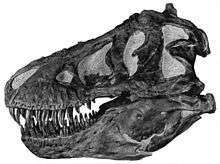Biting

Biting is a common behaviour of opening and closing the jaw found in many animals. This behaviour is found in reptiles, mammals fish and amphibians. Arthropods can also bite. Biting is a physical action an attack but it is a normal activity or response in an animal as it eats, carries objects, softens and prepares food for its young, removes ectoparasites from its body surface, removes plant seeds attached to its fur or hair, scratching itself, and grooming other animals and for defense. Animal bites often result in serious infections and mortality.[2] Dog bites are commonplace, with children the most commonly bitten and the face the most common target.[3]
Biting is also an age appropriate behavior and reaction for human children 30 months and younger. Conversely, children above this age are expected to have verbal skills to explain their needs and dislikes, as biting is not age appropriate. Biting may be prevented by methods including redirection, changing the environment and responding to biting by talking about appropriate ways to express anger and frustration. School age children, those older than 30 months, who habitually bite may require professional help.[4] Some discussion of human biting appears in The Kinsey Report on Sexual Behavior in the Human Female.
See also
References
- ↑ http://news.nationalgeographic.com/news/2012/120228-t-rex-bite-bates-science-biology-letters-dinosaurs/
- ↑ Cherry, James (2014). Feigin and Cherry's textbook of pediatric infectious diseases – Animal and Human Bites, Morven S. Edwards. Philadelphia, PA: Elsevier/Saunders. ISBN 978-1-4557-1177-2; Access provided by the University of Pittsburgh
- ↑ Kenneth M. Phillips (2009-12-27). "Dog Bite Statistics". Retrieved 2010-08-06.
- ↑ Child Care Links, "How to Handle Biting Archived October 7, 2011, at the Wayback Machine.", retrieved 14 August 2007